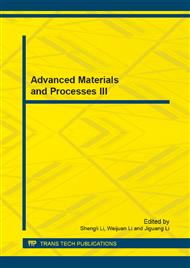p.1020
p.1026
p.1031
p.1035
p.1040
p.1044
p.1049
p.1053
p.1057
Study of Semi-Bond Abrasive in Tiny Grinding Wheel Based on Magnetorheological Effect
Abstract:
To achieve ultra-precision machining efficiently, the tiny grinding wheel based on MR effect is used as a grinding tool. In this paper, the state of abrasive in cutting process was analyzed through modeling, and the grinding experiment was performed on the optical glass (K9). Study results show that, with the increasing of grinding time, the surface roughness of workpiece is reduced and tends to be uniform, but the material removal rate is reduced. The abrasive of tiny grinding wheel based on MR effect can automatically adjust its grinding pressure and depth of cut to improve the surface quality.
Info:
Periodical:
Pages:
1040-1043
Citation:
Online since:
September 2013
Authors:
Price:
Сopyright:
© 2013 Trans Tech Publications Ltd. All Rights Reserved
Share:
Citation:


